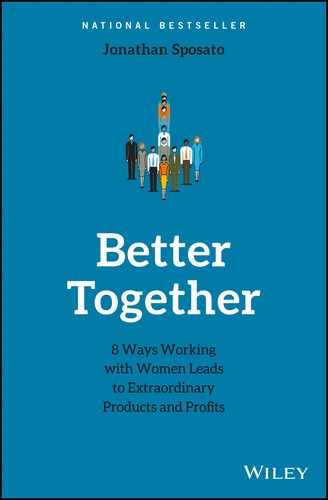3
Solution 2: In It to Win It: Supporting Women's Development
Reverse Mentoring

| 1. a rough cut, blow, or stroke. | |
|
|
| 2. informal | |
| an act of computer hacking. | |
|
|
|
|
|
|
When I invited Monica for lunch, I asked her to please pick a place she had never been but always wanted to try. “Ramen Man” was one of those tiny hole‐in‐the‐wall places you sadly stop going to once you're out of your twenties, simply because you want good service…. But it was authentic, Japanese owned, and delicious in a way that makes you suspicious. Don't ask, don't tell …

Something in my gut was gnawing at me about Monica's impact on the GeekWire team, and I desperately wanted to engage face to face. My highly smart business partners John Cook and Todd Bishop wanted to give her more responsibility, but somehow my gut was saying no. Feedback from my business partners at GeekWire was that Monica had come from a prominent family in Malibu, raised in a household that was both bohemian, intellectual, and with Hollywood roots. Monica was self‐assured for any age, incredibly hip, and opinionated. She also excelled at her job, distinguishing herself from peers much older through a consistent work ethic (gets to work by 7 a.m. every morning), smarts (able to learn every new software tool), and a winsome on‐air presence (she occasionally hosted weekly podcasts for GeekWire). She was all of 23. Naturally, I hated her. But I also wanted to understand my company's investment in her and exactly how she was a force multiplier.
As we sat down over egg noodles, Monica spoke passionately about her teammates, and how she enjoyed their supportiveness to explore new content areas for GeekWire. She discussed opportunities for the business to extend to Millennials, offering a new podcast series called “Generation App,” which eventually went on to be one of our most popular offerings. She also discussed the rabidly enthused, but younger segment of the tech community who can't afford our annual GW Summit or GW Awards ticket prices. Thus was born our return to smaller more casual meetups in more fringey venues. She spoke with zeal about the importance of pushing our editorial bounds further to make stories more compelling for girl geeks, a newly growing audience segment that encompassed an edgier and more subversive set. She discussed her own long‐term ambitions in journalism and media and her commitment to evolving GeekWire. In short, she did all the things you are supposed to do when you have an audience with the chairman of the company, and in the process inoculated the very top of the organization with fresh, bold ideas. Boy, was I completely wrong about Monica. Always confident and assured, she even provided constructive feedback on how I could do better as a leader. She is the real deal.
And I had then realized that I could learn more from her than she could from me. I had just had my first “reverse mentoring” session.
Reverse mentoring is a formal concept first advanced by Alan Webber, the cofounder of Fast Company. “It's a situation where the old fogies in an organization realize that by the time you're in your forties and fifties, you're not in touch with the future the same way as the young twenty somethings. They come with fresh eyes, open minds, and instant links to the technology of our future.”
Here are the five indisputable advantages of setting up a reverse mentoring program, where you pair a young woman with a senior man at your company:
- You send a super clear message that you value the voices of those who are not typically heard.
- You see with crystal clarity where your new leaders will emerge from.
- You gain a direct line of sight to issues all the way down the org. This is as close to being a sort of “undercover boss” as you can get.
- You close the chasm between generations: older employees learn about new apps, social media paradigms, or consumer behavior from a younger person and the younger person learns vital networking skills, business terminology, and industry practices from the older employee.
After my lunch with Monica, I realized that I was part of the problem. My initial reluctance to see her as a credible and long‐term engine of future progress in our organization, when I certainly had no problem routinely lauding praises on one of her male colleagues of equal youthfulness, underscored my own hidden biases. To me, she always felt a little “lightweight,” a bit “junior.” But if you had pressed me for details, I wouldn't have been able to offer any substance behind those characterizations.
The second key epiphany was how much someone half my age could teach me. We are socialized to believe that “youth is wasted on the young,” that the experience and wisdom we've accrued as we age remain relevant in perpetuity, and, thus, it is always a one‐way conversation from old to young. But this simply isn't the case. It's bidirectional.
And according to a national leadership development company Catalyst for Action, in order for the reverse mentoring relationship to yield the highest gains, senior managers must commit intentionally to the following:
- Sincere willingness to learn: In a reverse mentoring relationship, both parties act in the capacity of a mentor as well as a mentee. And in order to switch roles so fluidly, both sides must genuinely want to learn from and share with the other.
- Trust: Reverse mentoring requires the trust of each party. The goal is to “push one another outside of their comfort zones and try new ways of thinking, working and being.”
- Transparency: Both parties must be open with their feelings and with what they are thinking. They must be able to overcome differences in communication style (since different generations communicate differently) and be open to seeing situations from different angles.
So whatever became of Monica? She continues to be one of the standout stars of our organization. I have no doubt someday, she might run for president.
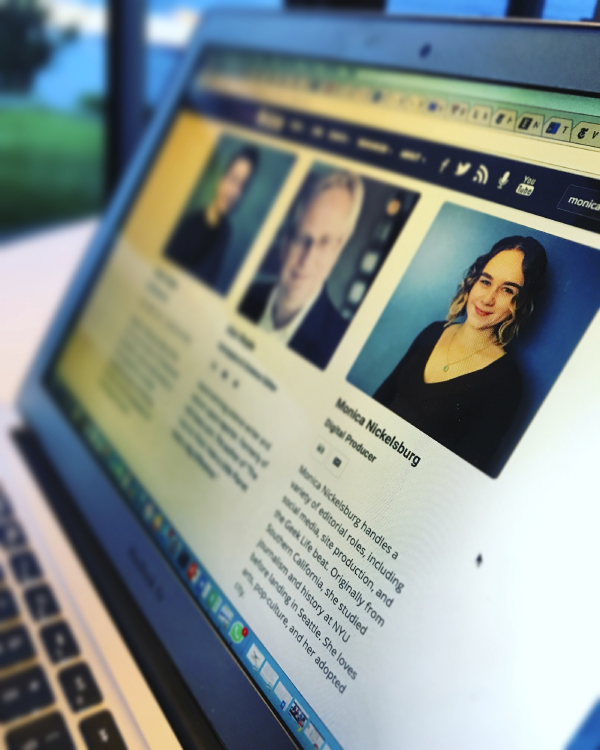
Monica getting top billing with veteran journalists.
Increasing Female Visibility
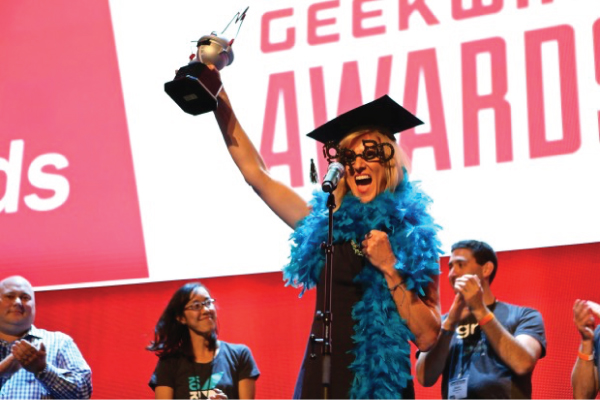
Koru CEO Kristen Hamilton receives the 2015 GeekWire “Startup of the Year” award.
All of a sudden, it starts drawing additional people So if other females see that person as a shining example and want to emulate them, they come in. They can draw talent both externally and internally So you do that on multiple fronts, and that can really, really help the organization grow from that overall diversity and global inclusion standpoint without putting in place big diversity programs that need a lot of administrative care to keep moving. —Interview Subject, National Center for Women and Information Technology
“Rebecca” is one of those phenomenal prodigies whom you admire and envy from the get‐go. How she managed to graduate from college at age 19, then go directly to work at the New York office of JP Morgan is something that surely required a talent that few of us have at a young age. After a highly successful tenure at JP Morgan, she took a job on the opposite coast at one of my own alma maters: Microsoft. There, she was embedded in the corporate finance team, the “heartland” team, handling the entire company's profit and loss reporting to senior management, gaining insane amounts of visibility into which business succeeded or failed, and why. The fact that she had a direct line of mentorship with Microsoft's CFO was of incredible mutual benefit to the both of them. My guess is that, similar to my relationship with Monica, the more experienced CFO learned just as much from Rebecca as the reverse.
When Rebecca interviewed for the director of finance position at my company, I knew I had a secret weapon on my hands. I knew that beyond the scope of her job, Rebecca was the key to unlocking more women to becoming leaders at my company. Within two weeks of her starting, I began asking her to present as a regular at my weekly all‐hands meetings to the entire company. While she was already winsome, articulate, and data‐rich in her presentation style, She also asked me to mentor her to modulate presentations with humor, humanity, and humility.
And every week, she owned presenting the financial status of the company, usually a dry topic. As a profitable SAAS (or software as a service) company, there was always much to tell. Fluctuations in conversion rate from free users to pay … mix shifts between the monthly and yearly subscriptions … changes in final bill‐through rate from one locale to the next … the take rate of a new product offering … we had to make these as interesting and fun to digest for the rest of the company as possible, so that folks stayed engaged and excited about their work. And Rebecca delivered beautifully.

From year 3 of PicMonkey, a typical all‐hands meeting with the team. Always keep the meetings useful, entertaining, and mission‐focused.
And as if on cue, something wonderful started to happen. One by one, other women at the company came forth to lead. Haley from operations asked to explore the finance area as a longer‐term career option and to mentor under Rebecca. Samantha our administrative assistant also asked, “So what would be my steps in order to be like Rebecca some day?” Still others who were peers with Rebecca—Danielle who owned SEO/SEM, Kelly in program management, Crystal our design manager—began to take much more active and visible roles at company meetings. Our head of growth, Meredith, who was already on a parallel track of elevated visibility at the company, began to step up her game and her presentations became that much more engaging, peppering dry graphs and charts with colorful imagery from her hiking trips the prior weekend.
And after gaining more confidence in public speaking from the all‐hands meetings, several of these folks extended their presentations to venues outside of the office, volunteering to speak at CFO conferences, marketing content seminars, meetups, and diversity inclusion events. Soon, our company developed a reputation in the ecosystem for having many women in critical positions, and women job candidates routinely applied in droves for any open position we had.
And this is something that's been corroborated in research. From the National Center for Women and Information Technology, who studied many companies and interviewed their leaders:
Advocates observed that having diverse role models in leadership was important for the good of the company, for women's career development, for the success of recruitment and retention efforts, and for employee satisfaction and productivity… [they] believed that increasing the visibility of current female leaders was an important part of larger recruitment, retention, and advancement efforts. As one man observed, “More senior women in the leadership team will attract more females…”
Increasing the visibility of female leaders and their achievements sends a message that females can be strong contributors and that they will be recognized and valued for their contributions. This strategy also is important because it is something that can begin almost immediately, whereas developing new female leaders may take more time.
Indeed, I have firsthand evidence that it is something that can begin almost immediately. And it works.
And when I apply these dynamics to a broader ecosystem, we can observe similar results. For decades many industry events sponsored by trade organizations and trade alliances were dominated by men, predominantly middle‐aged, white, and suit clad. The typical speaker panel looked like this:

Oops, an all‐male panel for a 2016 International Women's Day Conference in Melbourne Australia.
Source: Transdev Melbourne.
Then one day something hit me. I received this email from my good friend Stan Spiro, a well‐known CEO in town. The email looked something like this:
Hey Guys,
Someone on my team just asked me if GeekWire spends any effort balancing their speaker line up and panels with more women.
If not, I urge you to do so. It makes a real difference. It's important.
Stan
And I am embarrassed to admit that our first reaction was one of defensiveness. Hey, we have plenty of women on our panels! Why is he telling us? Who does he think it is? He's not the boss of us!!
GeekWire averages about 10 events every year, each one ranging from as few as 500 attendees for the more niche conferences (say our Sports Tech Summit celebrating the intersection of sports and how technology advances athletes' performance and training) to our largest ones at 1,700 people (our annual GeekWire Ping Pong and Dodgeball tournament, or our Tech Summit). At each of these events, we typically have about 20 or so speakers and panelists. A fair estimate is that we ask about 170 to 200 people a year to take the stage.
But as a result of Stan's email, we did decide to take stock of our speaker lineup for the next upcoming event. And it did not look good. When we did the accounting, speaker after speaker, we saw a preponderance of men. Stan was right; we needed to do better.
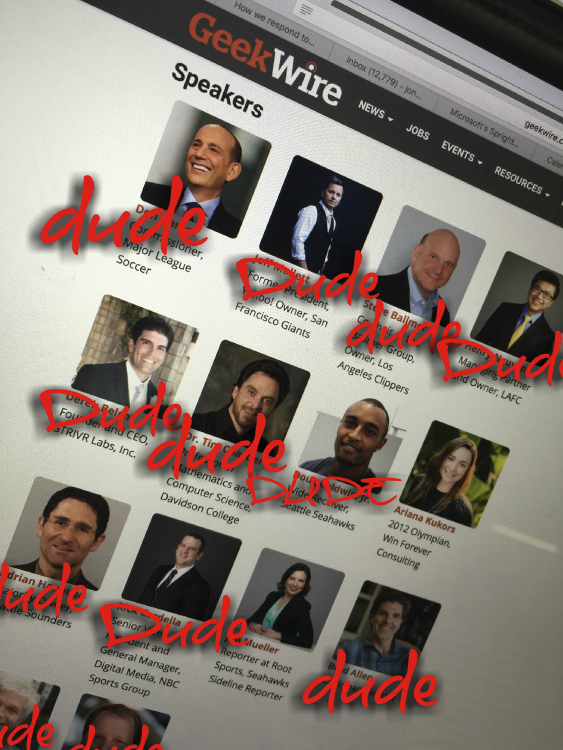
All really great male speakers, but we needed more women.
And as a result, we started to make some changes. Changes that would soon result in speaker lineups that reflected the world we wanted to live in. We goaled ourselves to be at an above par 35 percent female speakers. We started to lean on past female speakers to recommend additional women. Once we locked in the commitment from a few early speakers, wherever we had the option of a male or female speaker for the same slot, we would book the woman.
Our lineups then started to look more like the below. I am not saying we're always perfect, but we are getting better.

And soon after, just as offering more public visibility to female leaders at your company begets more female applicants, GeekWire saw a corresponding impact from more female representation on raising the sheer numbers of female attendees at these conferences. Our signals to the world that we were making a concerted effort to create more opportunities sent a clear message that we were in the business of creating inclusive environments.
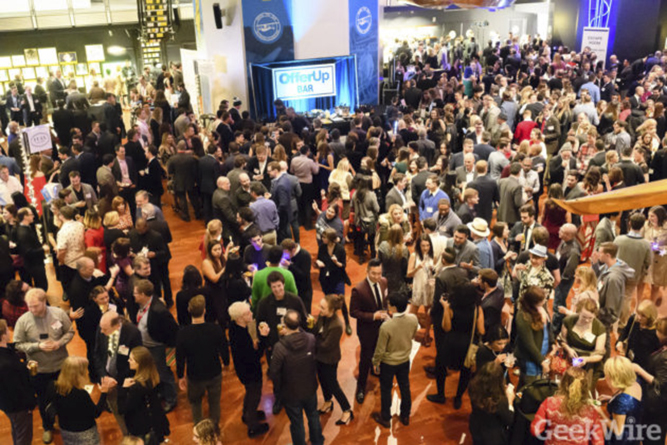
2016 GeekWire Gala.

The Riveter cofounders Amy Nelson and Kim Peltola after winning the award for Newcomer of the Year.

CEO of Siren Susie Lee wins GeekWire's App of the Year (2016).

Yours truly fulfilling his duties as photobomber.
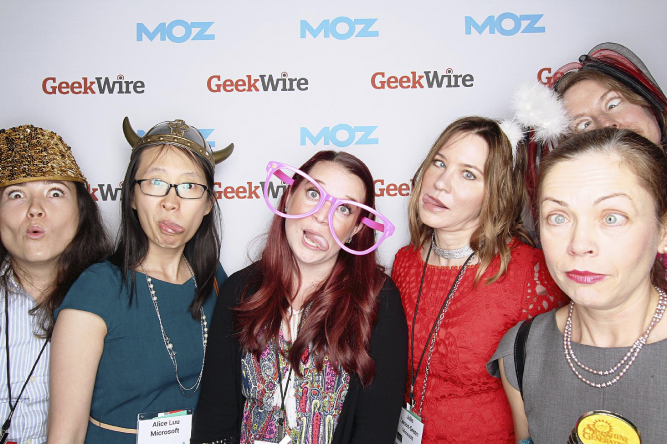
These attendees can't believe how gender noninclusive OTHER industry events are.
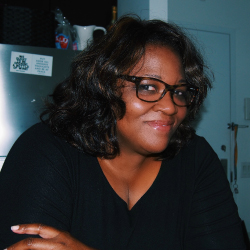
Eugenia Harvey
Owner of Kingdom Come Productions, PBS Series Producer “Race Matters: Solutions”
Straight Talk: “Women have the same issues as African Americans. You have to be the very best to be taken seriously. In the words of my former boss ‘You better walk on water.' And I thought, ‘I see a lot of men around here drowning, so no problem.’”

Maria Hess
Head of Business Development, Growth & Marketing, PicMonkey
Straight Talk: Being the default parent is distracting and challenging.
“It's not the case for every woman, but it does still seem to be the majority of mothers are the default parent, especially when both parents are working. Default parent means calls/texts during a meeting when little Johnny is sick, interruptions during the day for permission slips, doctor/dentist appointments, and so forth. Part of this is just life with kids. But part of the solution is setting up ways for businesses to be supportive and flexible, and not see this as a ding against performance or potential.”
